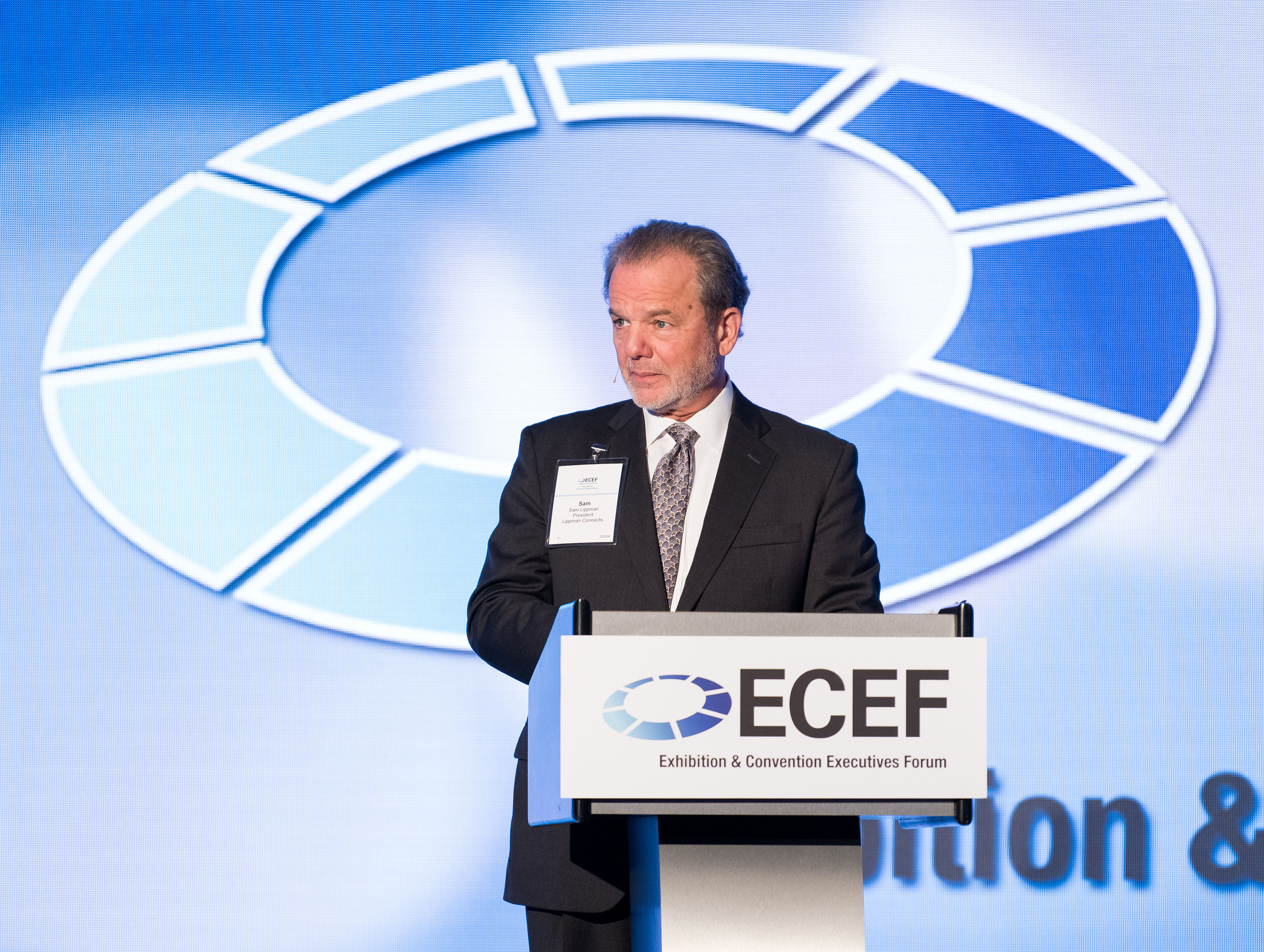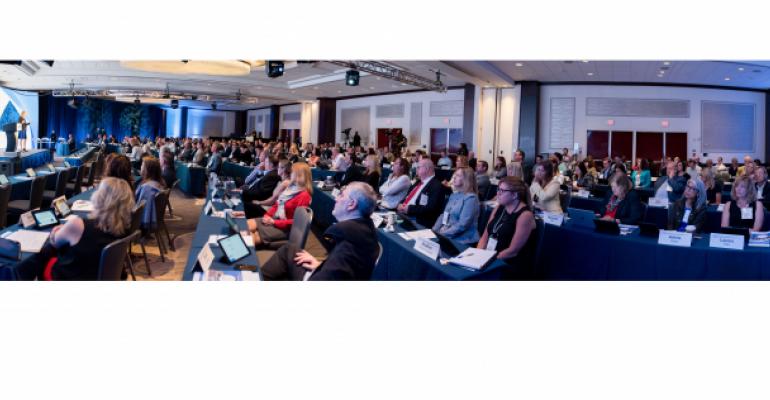At the annual Exhibition & Convention Executives Forum, Sam Lippman, president of Lippman Connects and producer of the event, has a tradition of starting off the conference with a five-minute summary of the top-level takeaways from the annual ECEF Pulse Survey. This year’s event on May 28 at the JW Marriott Washington, D.C., was no exception, and Lippman’s quick delivery of the survey results—five business trends for convention executives—was a fitting blast-off to the fast-paced educational day.
Here are Lippman’s five trends, based on 201 survey responses from C-level executives and vice presidents at associations and independent event organizers.
 1. Growth, but Trending Downward
1. Growth, but Trending Downward
The outlook for exhibitor sales—net square feet sold, the number of exhibiting companies, and sponsorship sales—is not as strong as last year. All three metrics have been on a downward trajectory since 2014, with fewer and fewer respondents reporting that they see growth in these areas. “We are in a level period right now, which is not a surprise. After the recession, we had a lot of years of growth,” said Lippman (pictured above). At least half the respondents are still experiencing growth in all areas, but that percentage is going down. For example, the percentage of respondents who said their number of exhibiting companies is growing has dropped from 72 percent in 2014 to 52 percent in 2019.
But Lippman found a bright spot in the attendance metrics. “What I’m most pleased about is, after four years of downward trend, more of us are seeing growth in attendance.” Pointing to the uptick from 45 percent to 47 percent who report attendance growth at their events, he said, “I think that’s the most important metric because if we don’t have growing attendance and we don’t have the right attendees, the other three things don’t happen.”
2. Attendee Acquisition Spending Remains Steady
Lippman sees no secret to the uptick in attendees. “The reason we’re having this little bit of increase is that we continue to invest. It’s not that difficult to figure out. If you put money and energy into something, you should be able to get results if you’re doing it right.” According to the Pulse research, 45 percent of respondents invested more this year in attendee acquisition—an average of 9 percent more—while 49 percent kept their dollars the same. Only 6 percent decreased their spending.
Whether your strategies to increase attendance include adding new staff, more experienced staff, new technology, or outsourcing, “it’s not an expense, it’s an investment,” says Lippman.
3. Profit Pessimism
For the first time in years, said Lippman, there were more respondents who were pessimistic about next year’s profit growth than those who were optimistic. In the 2019 survey, only 46 percent expect an upswing in profitability from their largest event. That compares to 52 percent in 2018 and 59 percent in 2016 and 2017.
4. Headwinds
Lippman explained the increased pessimism as a consequence of rising challenges. Each year, the C-level respondents are asked to rate various conference challenges, and this year the potential for exhibitors leaving their shows in order to invest marketing dollars in digital and online channels is definitely on respondents’ radar. In 2018, only 20 percent rated competition from digital/online channels as a critical concern; that jumped to 32 percent this year.
The survey also asked respondents to rate which event technologies are extremely disruptive to their business. In 2018, 34 percent said “24/7/365 platforms connecting attendees and exhibitors” were extremely disruptive. But this year 49 percent believe that, making this issue the top tech disruptor ahead of artificial intelligence and predictive analytics. “Almost half of you are realizing that if we don’t stay connected with our audience 24/7/365, someone else will,” Lippman said. “We can’t connect four days a year when our competitors are connecting 365.”
5. Embracing Digital
The good news is that many organizations are aware of the need to be more connected to attendees, said Lippman. “More of us are doing digital extensions to strengthen our brand.” In the 2019 survey, 42 percent say they have or are planning to have a digital extension, which is up 3 percentage points over 2018 and 8 percentage points over 2017. The digital efforts, Lippman said, are much less likely to be designed as revenue streams as they are to increase engagement, strengthen the brand, and offer content to prospects who can’t attend the face-to-face conference.





